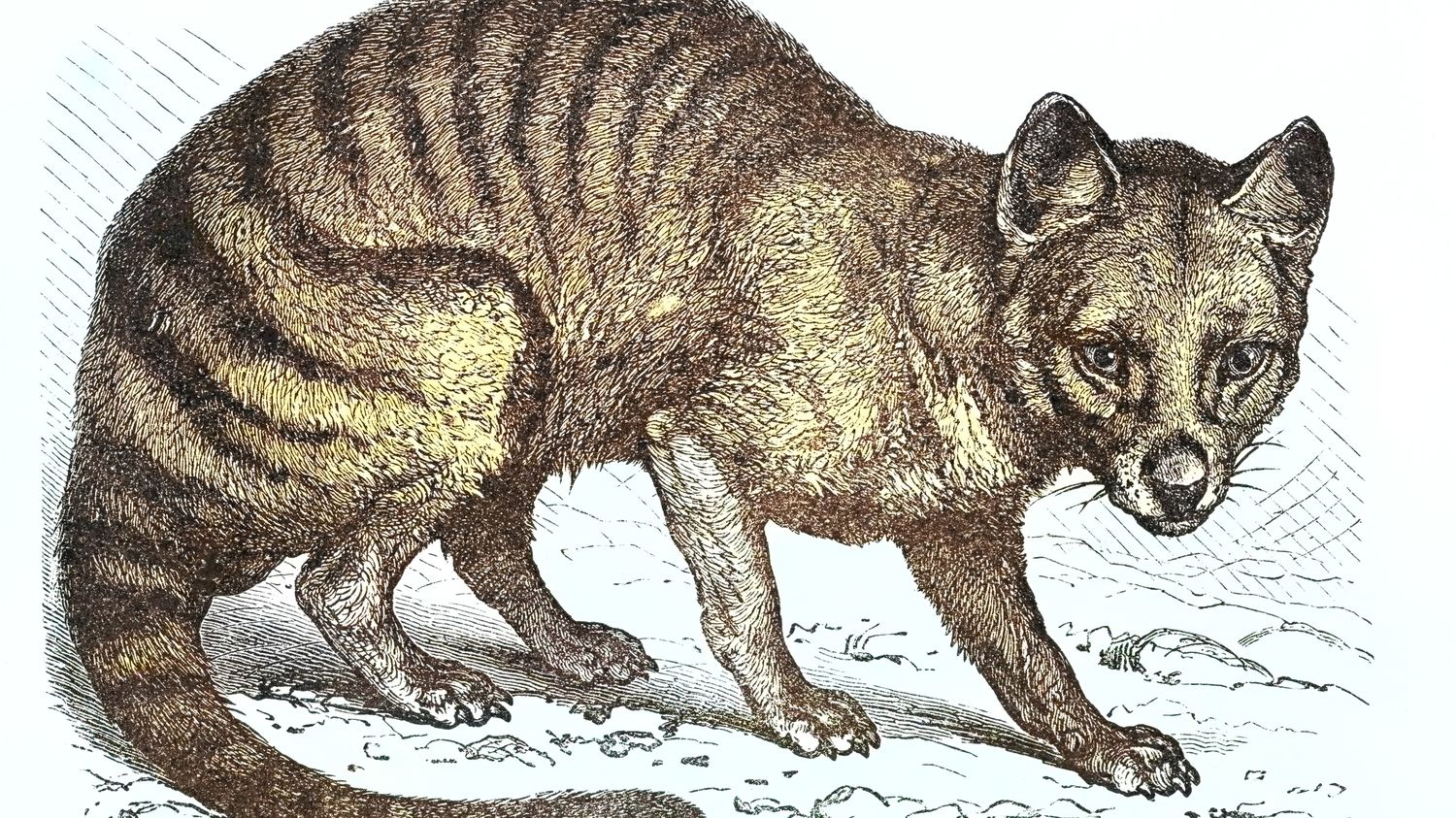This is the first time that the genetic sequences of an extinct species have been reconstructed. The scientists did this using muscle and skin samples from a 132-year-old museum specimen.
We are reconstructing an extinct species, the Tasmanian tiger, from its RNA. This is what Mathilde Fontez, editor-in-chief of the scientific magazine Epsiloon announces to us today in The weekend science post. This is a scientific first.
franceinfo: Researchers have succeeded in reconstructing the RNA sequence of an extinct species, the Tasmanian tiger. An RNA sequence, not DNA?
Yes, DNA from extinct species had already been recovered: cthat of the mammoth, for example, has been sequenced. And also that of the Tasmanian tiger, in 2017. We recall that the Tasmanian tiger is an animal the size of a wolf, which disappeared in 1936, due to pressure from man who had hunted it massively.
It is therefore a fairly emblematic animal, of which we still have photos, and specimens preserved in museums. And it was precisely by collecting skin and muscle samples from a Tasmanian tiger, kept at the Stockholm museum, that a team of Swedish biologists managed to find RNA.
RNA tells us something different than DNA?
RNA is what regulates gene expression. It intervenes to express the genetic code, at the level of each cell throughout the body. It’s a kind of code translator. And like any translation, it brings nuances and dynamics. In short, it plays a very important role in the final organism.
Except that until then, biologists did not imagine being able to find usable samples in an extinct species. This molecule is much more unstable than DNA, it fragments into small pieces very quickly. They had to adapt the analysis protocols. And finally, they were able to extract 1.5 million sequences, from the muscles of the Tasmanian tiger, and 2.8 million sequences, from the skin.
And this allowed them to discover new details about the animal?
It begins: researchers saw variations in gene expression in different skin tissues. They found sequences coding for proteins that allow muscles to stretch or contract. They even isolated RNA that did not belong to the Tasmanian tiger, but to viruses that infected it. And above all, with this first, a whole new field opens up: all specimens of extinct animals, all samples kept in museums could be candidates for this type of study.
It also opens the door to the study of ancient viruses. Not to mention the fantasy, a little oversold, but which is nonetheless the subject of large investments in research: that of reviving extinct species, “de-extinction”. A laboratory was set up in 2022, at the University of Melbourne in Australia, specifically for the Tasmanian tiger. And this RNA code could help, researchers say.
